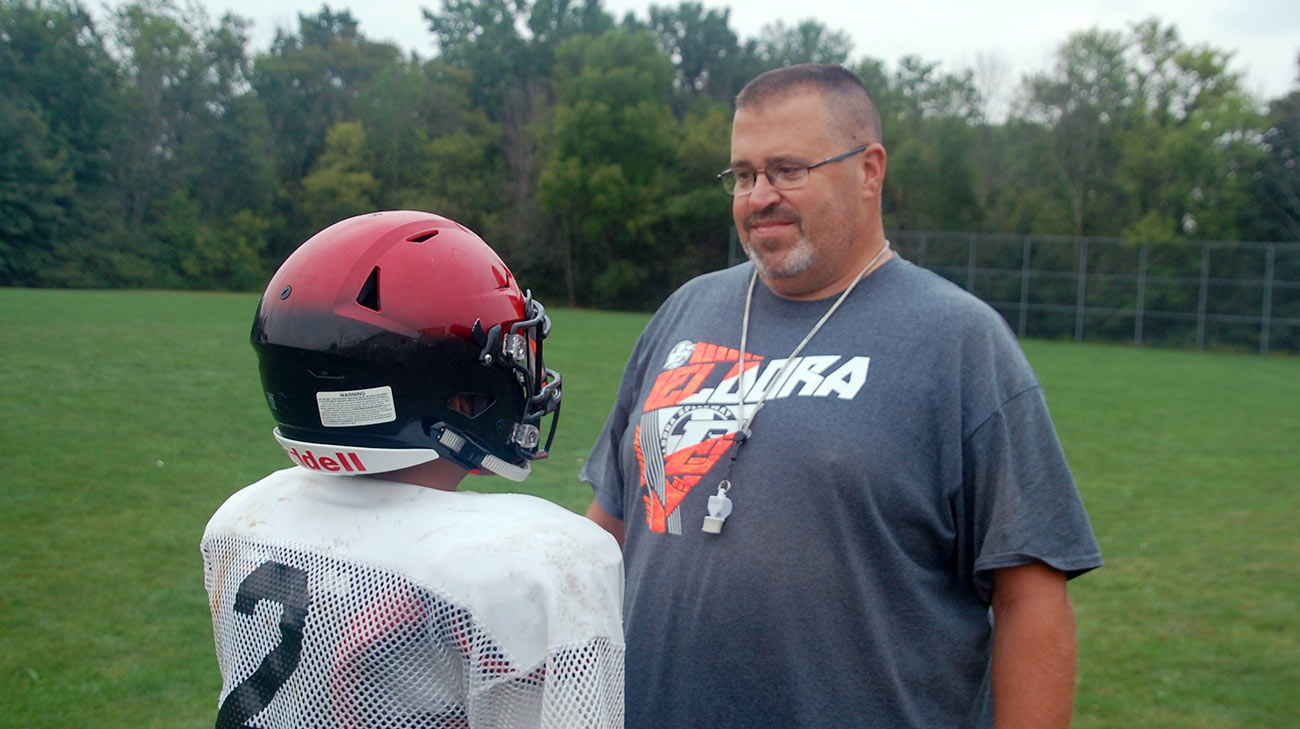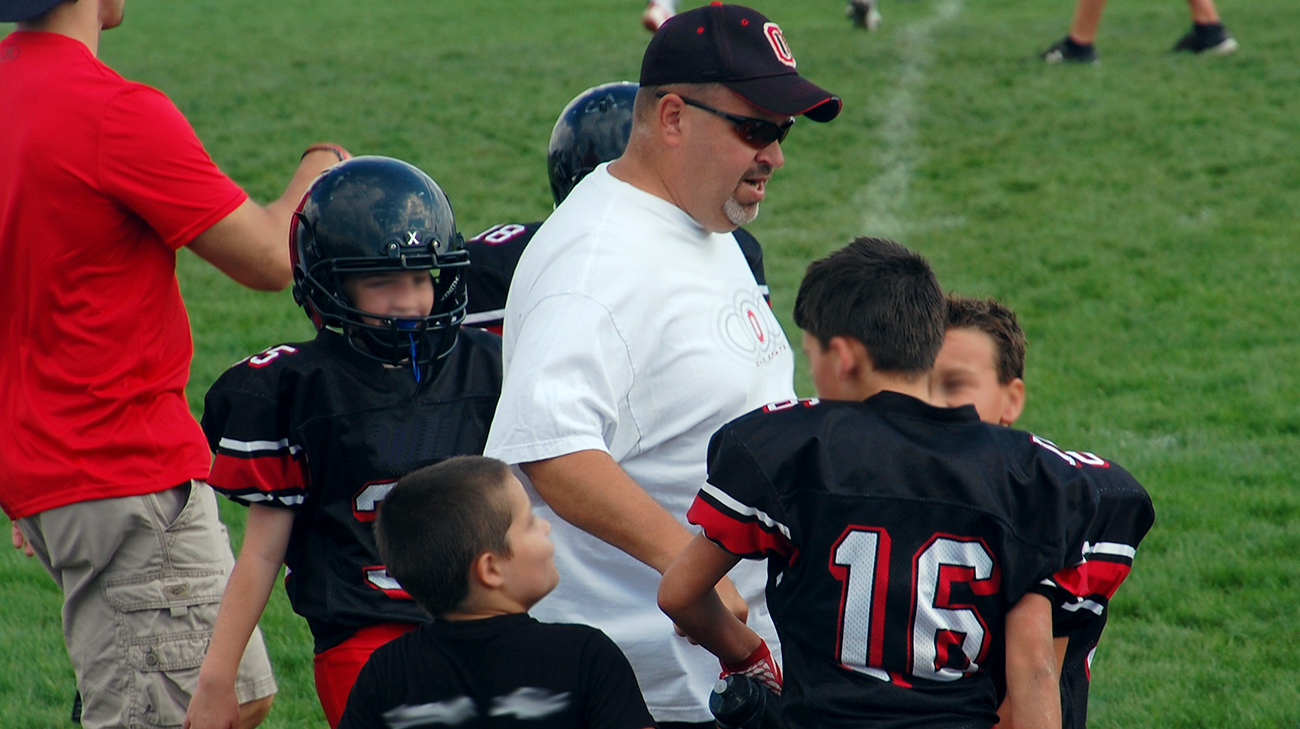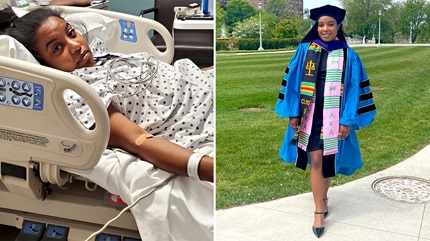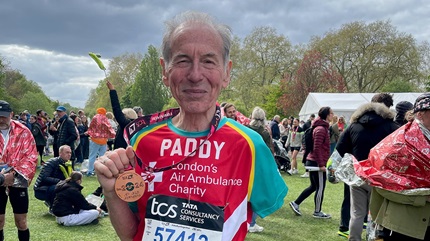
Todd Farrell thought he just had a tight muscle in his neck — like he had slept wrong on his pillow. But the pain wouldn’t go away, even with muscle relaxers from his doctor. Four months later, the neck pain woke him at 1:20 a.m., shooting up the left side of his head.
After a trip to the emergency room near his home in Orrville, Ohio, he was sent to a community hospital for what turned out to be a cancer diagnosis.
“They first found the spine tumor in my neck, and later found the kidney cancer, which also had spread to my lung,” says Todd, an operations manager who enjoys coaching youth sports.
While the kidney cancer would eventually require immunotherapy, the foremost issue was stabilizing Todd’s neck. The cancer that had spread to his spine had destroyed the bones in his neck, causing intense pain and instability.
Todd had surgery to fuse several of his neck vertebrae. This was an important first step, but he still needed treatment for his spine metastasis. At his local neurosurgeon’s recommendation, he drove one hour north to Cleveland Clinic, where he met neurosurgeon Lilyana Angelov, MD, and radiation oncologist Samuel Chao, MD, who work jointly on the management of spine tumors at Cleveland Clinic’s Rose Ella Burkhardt Brain Tumor and Neuro-Oncology Center.
“He’s doing so well because of SRS. I don’t want to even fathom if he had taken another route. I’m so glad that Cleveland Clinic offers the SRS option for challenging cancer tumor treatment.”
“Spine tumors can cause disabling pain, injury to nerves or the spinal cord, and ultimately paralysis if they’re not treated early,” says Dr. Angelov, Head of the Section of Spine Tumors.
Typical treatments include surgery, conventional radiation therapy over days or weeks, and chemotherapy. Some of these options are painful, require significant recovery time or come with unwanted side effects. But Cleveland Clinic is one of few locations in the U.S. that offers another option, a noninvasive outpatient procedure called stereotactic spinal radiosurgery.
“In 2006, we were the first program in Ohio to offer stereotactic spinal radiosurgery and one of the first in the country,” says Dr. Angelov. “We have been considered one of the leading programs in the nation for over a decade now.”
Stereotactic radiosurgery (SRS) pinpoints the tumor with narrow radiation beams and a 3-D targeting system, explains Dr. Angelov. Physicians concentrate higher doses of radiation on the tumor while minimizing radiation on healthy tissue, which means few, if any, side effects and virtually no recovery time.
“This concentrated dose may allow for better, prolonged control of disease and better pain relief compared to conventional radiation,” says Dr. Chao. “It can significantly improve a patient’s quality of life.”
Todd had one visit to prepare for SRS and then had the treatment two weeks later.

Coach Farrell was excited to return to working with young athletes in his local community once the pain was gone after his surgery.
“It was easy!” he says. “They had me lie on the table while they did some imaging to ensure alignment. Then the radiation, itself, took only a few minutes. I felt nothing.”
Todd’s only side effects were a slight sore throat and a sore jaw, which subsided the next day.
“The SRS treatment had way fewer side effects than would a standard surgery,” says Todd’s wife, Kayla. “The prognosis after SRS was far superior to standard surgery.”
Two months later, an MRI scan showed Todd’s spine tumor had stopped growing and was even a tiny bit smaller. Future MRI scans will make sure it stays that way. If needed, Todd can have SRS again, but many people only need one treatment.
“He’s doing so well because of SRS,” says Kayla. “I don’t want to even fathom if he had taken another route. I’m so glad that Cleveland Clinic offers the SRS option for challenging cancer tumor treatment.”
Now with the neck pain gone, Todd is back to his normal work and coaching schedule.
“I played football in high school and have been coaching youth tackle for two years, as well as coaching wrestling, baseball and girls fast-pitch softball,” he says. “Except for not being able to turn my head like I used to [due to the initial spine fusion surgery], my quality of life is as good as it ever was.”
Related Institutes: Neurological Institute, Cleveland Clinic Cancer CenterPatient Stories
Lasting Results: 110 Pound Weight Loss Transformed Woman’s Life
May 1, 2024
Young Woman Achieves Goal of Becoming a Lawyer While Managing Pulmonary Hypertension
Apr 30, 2024
Man’s Carpal Tunnel Journey Highlights the Importance of Timely Treatment
Apr 29, 2024
"I was worried about losing my independence and quality of life - but the whole process from start to finish took only a matter of weeks."


